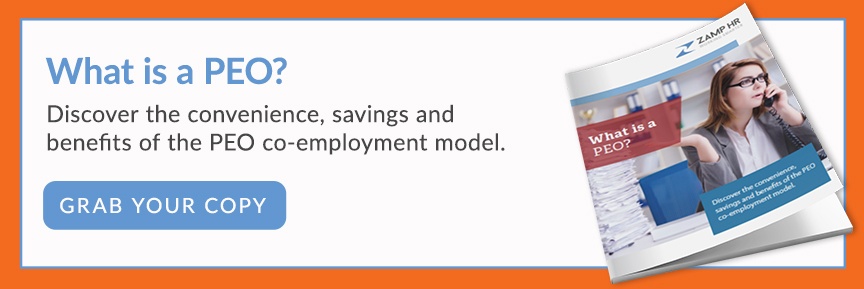Employers who have a high turnover rate must spend money consistently recruiting, hiring, and training new talent. Providing a retirement plan is one of several strategies companies employ to retain talent. The specific advantages of offering a retirement plan to employees depend on whether the retirement plan is qualified or non-qualified.
Qualified vs. Non-qualified Retirement Plans
The fundamental difference between qualified and non-qualified retirement plans is their compliance with the Employee Retirement Income Security Act of 1974 (ERISA). Qualified plans must meet ERISA requirements and Internal Revenue Code Requirements for holders to be eligible for tax benefits. Some basic requirements are:
- Qualified plans must be permanent without an expiration date.
- The retirement plan must be a written program that you communicate to all employees.
- All the money, or plan assets, must be paid into a trust administered by one or more trustees.
- The retirement plan can only benefit employees and their beneficiaries.
- None income in the retirement plan can revert to the employer.
- An employer must establish and maintain the retirement plan.
- Employers, employees, or both can contribute to the plan.
- Retirement plans must cover a specific percentage of employees, and the employees must be enrolled in the program.
- Qualified plans cannot privilege officers, shareholders, or execs and provide them more benefits.
Conversely, non-qualified plans do not meet ERISA requirements, and holders do not get the same level of preferential tax treatment. Non-qualified plans do not need to cover all employees, they do not need to be permanent, and do not need to comply with the above requirements.
Here are some major benefits for each type of retirement plan:
Advantages of Qualified Retirement Plans
Most companies choose to offer qualified retirement plans because of their many advantages, which include:
- Vesting. Employees have an incentive to stay longer with qualified retirement plans because they want to be fully vested before making a job change. Vesting methods can vary, but the most restrictive vesting limits allowed are five or seven years. Employers can make plan participants wait five years for full vesting without any vesting in the first four years, or they can have employees become partially vested each year until they reach seven years.
- Tax-exempt. Income earned within the retirement account is not subject to income tax because qualified plans grow within a tax-exempt trust. Participants do not have to pay tax on their contributions until the employer distributes the funds.
- Tax deduction. Employers who contribute or match contributions receive a tax education up to the maximum amount defined by the law.
- Tax credit. Providing your employees with a qualified retirement plan may make your business eligible for a tax credit.
- Attracting talent. The best talent in the job candidate pool has a choice of employers, and they are more likely to accept an offer that includes full benefits with a retirement plan.
Advantages of Non-Qualified Retirement Plans
Non-qualified retirement plans do not have the same benefits as qualified plans, but they do have some. They also provide flexibility for business owners to offer different benefits for high-level executives. Some advantages of non-qualified retirement plans include:
- Limited tax benefits. Non-qualified plans still get tax benefits, but typically none related to nondiscrimination, eligibility, funding, and vesting. They do not have to comply with laws related to these areas, so they do not reap the same tax benefits. Businesses may still be eligible for tax deductions and tax credits.
- Golden handcuffs. This colorful name refers to an agreement between a business and its executives to promote long-term employment and prevent turnover. In a golden handcuff agreement, a business pays executives additional retirement benefits if they meet certain conditions. Conditions often include staying with a company until a certain age or for a certain number of years.
Barriers to Offering Retirement Plans
Many small and medium-sized businesses want to set up retirement plans for their employees, but they struggle to get it done. Setting up a retirement plan on your own is a difficult task. Some barriers business owners face include:
Fees
The smaller number of plan participants results in higher administrative fees, making it difficult for small businesses and startups to absorb the fees.
Complexity
Setting up a retirement plan for employees is a complex process and requires specialized knowledge to make the best choices for plan participants. Rules are often complex, as well as the tax aspects of retirement plans.
Cost
The cost of setting up a retirement plan is often tied in with complexity. The vast majority of businesses need to get outside help to navigate the challenges of setting up a retirement plan. Professional assistance can be expensive and a legitimate barrier for small businesses who want to prove a retirement plan to their teams.
Professional Employer Organizations as a Solution
Fortunately, small- and mid-sized companies have options to overcome the barriers that have stopped them from providing retirement plans to their employees. Entering a partnership with a human resources outsourcing partner, such as a Professional Employer Organization (PEO) allows businesses to get better rates on retirement packages. A PEO partnership gives companies access to the master benefit plans of a PEO, including options for retirement plans. Additionally, PEOs have the knowledge and expertise to set up a retirement plan and deal with associated complexities.



